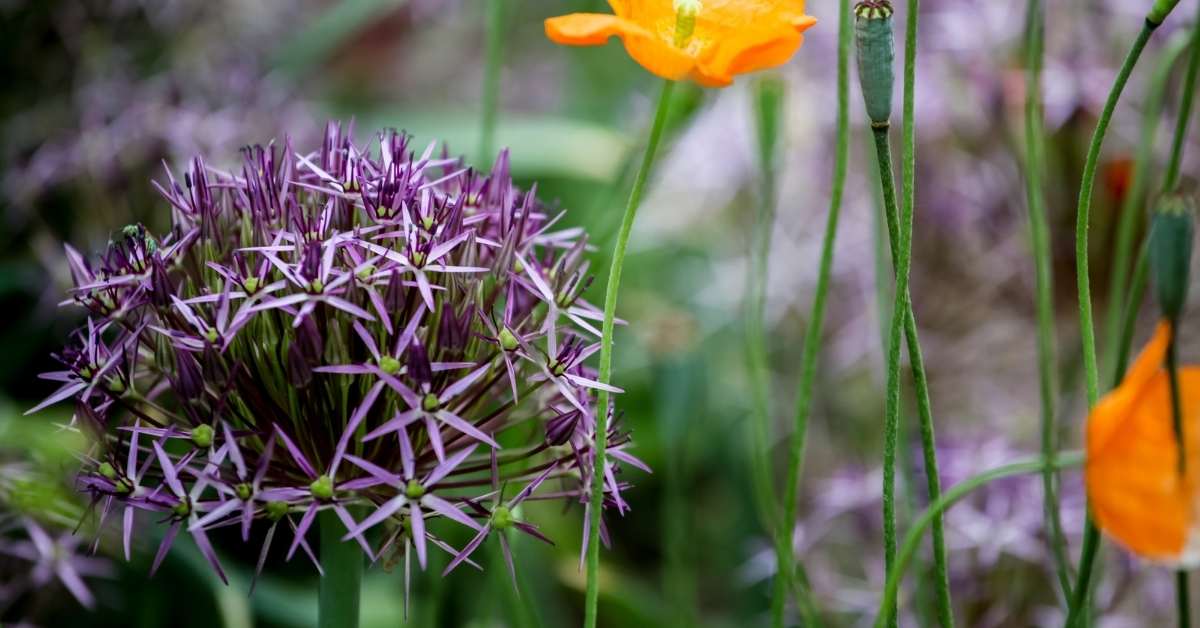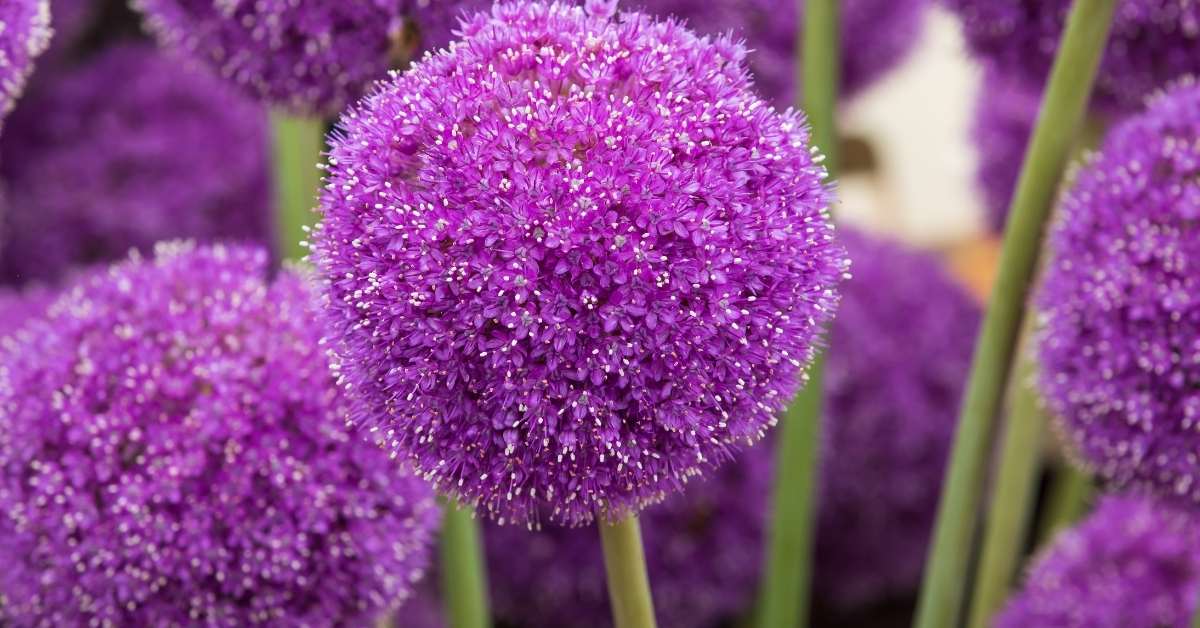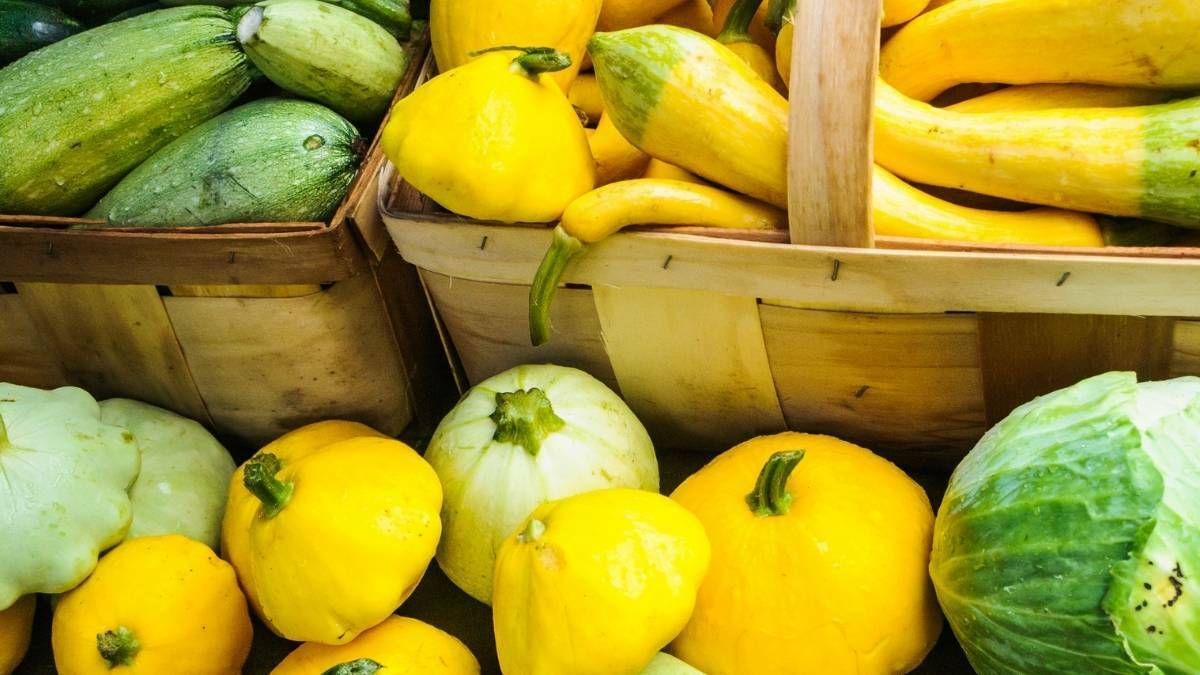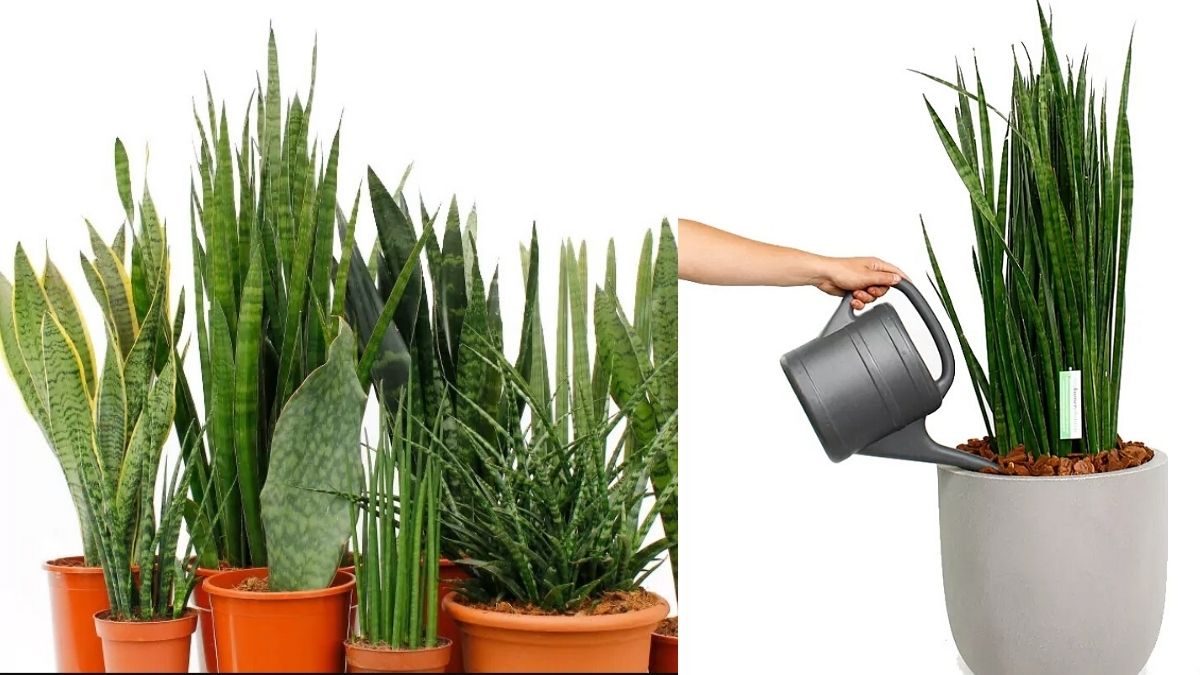If you think onions are only good for cooking, think again. There is a whole group of plants called ornamental onions or alliums that are related to onions but produce stunning ornamental flowers. These flowers come in various shapes, sizes and colors, from the tiny yellow A. moly to the towering purple A. giganteum.
Alliums are not only beautiful but also easy to grow and resistant to pests and diseases. They can add drama, contrast and interest to any garden, especially when planted among other perennials or bulbs. In this article, I will introduce you to some of the best allium varieties that you can grow in your garden and enjoy their spectacular blooms.
What is Allium?
Allium is a genus of plants that belongs to the Amaryllidaceae family, which also includes garlic, leeks, chives and shallots. There are over 900 species of alliums, most of which are native to temperate regions of the Northern Hemisphere.
Alliums are characterized by their onion-like bulbs, long and slender leaves, and spherical or umbel-shaped flowers that consist of many small florets. The flowers can be white, yellow, pink, purple, blue or green, and they often have a strong scent that varies from sweet to pungent.
Alliums have been cultivated for thousands of years for their edible, medicinal and ornamental uses. Some of the most popular edible alliums are onion (A. cepa), garlic (A. sativum), leek (A. ampeloprasum), chive (A. schoenoprasum) and scallion (A. fistulosum). These plants are rich in sulfur compounds that give them their distinctive flavor and aroma, as well as various health benefits such as lowering blood pressure, cholesterol and inflammation. Some alliums also have antifungal, antibacterial and antiviral properties that can help prevent infections and boost immunity.
Besides their culinary and medicinal value, alliums are also highly appreciated for their ornamental value. Many gardeners grow alliums for their showy and long-lasting flowers that attract bees, butterflies and other pollinators. Some of the most popular ornamental alliums are Star of Persia (A. christophii), giant onion (A. giganteum), drumstick allium (A. sphaerocephalon), globe master (A. ‘Globemaster’) and purple sensation (A. ‘Purple Sensation’). These plants can add height, color and texture to any garden design, especially when mixed with other perennials or bulbs. Alliums are also easy to grow and care for, as they require little maintenance and are resistant to most pests and diseases.
1. Christophii

Now, sometimes this one is sold under the name of A. albopilosum, but it’s the same plant – the taxonomists can’t seem to get the message across to some garden centers that the name has changed. I first saw this plant at the Experimental Farm in Ottawa after it had finished blooming, and I quickly realized two things:
1) That it was called the Star of Persia because of this wonderful seed pod that resembled a multi-pointed star, and
2) I wanted one or two or three for my own garden. The flower, a metallic purple, is a beauty, and if planted out in the full sun about four to six inches deep, this star will flower for years in our gardens.
If you decide you need more than one, plant them four to six inches apart to give your early summer a wonderful glow. They’ll be about twenty-four inches tall, so do plant them where they will be easily seen. I particularly like this allium as it begins flowering as the tulips are beginning to decline.
Planting ornamental onions such as the Star of Persia is an easy way to extend the spring bulb blooming season.
2. Giganteum

Its name says it all. This is truly a huge flowering bulb as it reaches forty-eight inches tall on the stalk and produces a massive six-inch blossom.
This one is quite hardy, is never bothered by pests (unless these pests are human), and is easily grown. Plant the bulbs four to six inches deep in a very sunny spot. You want full sun with this one so the stems will stay stiff and upright.
Shade gardens will produce weak stems that flop over, and there are few sights sadder than a flopped-over allium when the flower is too heavy for the stem. If you have to plant more than one of these ornamental onions, plant them at least eight inches apart.
The plant breeders are using A. giganteum to give extra height and flower size to other hybrid bulbs. The best known of these is the cross between A. giganteum and A. stipitatum (native to Afghanistan) sold as ‘Globemaster.’ ‘Globemaster’ has a ten-inch, silvery-violet blossom and will be a hit in any garden.
3. Allium moly

This is a smaller firm that is well worth growing. I’ve just obtained this one myself from a friend, although I’ve admired it for many years in other people’s gardens.
A. moly is bright yellow and about ten inches tall. It begins blooming at the end of May to early June in local gardens, and if planted in the full sun and 3 inches deep, it will live happily in your garden for years.
In fact, if happy, it will not only live where you plant it; it will live just about anywhere you don’t want to weed it out of. (which accounts for why I haven’t grown it before in my garden) This is a bit of a spreader, so I do plan on weeding it out after a few years (I am).
Suppose you can find the cultivar ‘Jeannine’ and purchase this because it has two flowering stems on each stalk rather than the single of the species. You’ll get twice the blooms and twice the seeds. This native of Southern Europe should be planted four inches apart.
Plant about six in a small clump to get you started – after that, move them around your garden or allow them to self-sow to give a cheerful yellow show after the tulips are finished.
There are two other Alliums you’ll often see in garden centers.
4. A. Neapolitanum is a cheerful little bulb-producing glistening star-shaped flower held on 15-inch stems (give or take a few inches). The nodding buds open up to upward-facing, glistening white flowers with yellow anthers. This is a bulb of the dry, open sunny spaces in Portugal and the Mediterranean.
Do not put it in clay soils, and do not grow it where it will get much summer moisture. Moist soils in the summer will simply kill it; it wants full, hot sun and baking, well-drained soils with no clay. While the flowers have a pleasant fragrance to them, as a native of southern climates, they can be a bit miffy in colder climates. Many gardeners do find, however, that they make excellent forcing bulbs.
5. A. Karataviense. This strapped leaf-shaped plant is well worth a place of honor in any rock garden or the front of a sunny perennial border.
The four to six-inch blossom is slightly unexpected at eight inches tall but quite welcome in the early spring garden. There is a range of available colors – from pinks through violets – so grow them all. Plant these ornamental onions three inches deep and three inches apart (you’ll want lots of these) to give you a great show in the spring.
If you’ve never grown them before, you’ll be surprised by the almost lack of flower stem – the flower looks as if it were resting directly on the leaves.
And no, these ornamental onions don’t stink; they just capture your heart.
Allium Plant Care
Alliums are easy to grow and care for, as they have few requirements and problems. Here are some basic tips for growing and maintaining healthy alliums in your garden:
- Plant allium bulbs in the fall, about 2-3 times their depth, in well-drained soil. Choose a site that gets full sun for the best flowering and healthiest plants.
- Water alliums regularly during the growing season, but avoid overwatering or letting the soil get soggy. Alliums are drought-tolerant and can rot if they remain wet for too long.
- Fertilize alliums lightly in the spring with a balanced fertilizer or compost. Avoid high-nitrogen fertilizers that can promote leaf growth at the expense of flowers.
- Deadhead faded allium flowers to prevent self-seeding and to keep the plants looking tidy. You can also leave the seed heads on for added interest or cut them for dried arrangements.
- Cut back allium foliage after it turns yellow and withers. Do not remove the leaves while they are still green, as they provide energy for the bulbs.
- Divide allium clumps every 3-4 years to prevent overcrowding and propagate new plants. You can also propagate alliums from offsets, aerial bulbils, or seeds.
- Protect alliums from pests and diseases by choosing resistant varieties and practicing good hygiene. Alliums are generally deer- and rodent-resistant but may attract onion flies, thrips, or mildew.
Do Allium Bulbs Multiply?
One of the advantages of growing alliums is that they can multiply over time and produce more flowers. Allium bulbs can multiply in two ways: by producing offsets or by producing seeds. Offsets are small bulbs that grow around the base of the parent bulb and can be separated and replanted to create new plants. Seeds are produced by the flowers after they fade and can be collected and sown to grow new plants.
However, not all alliums multiply at the same rate or in the same way. Some alliums, such as garlic, chives and scallions, produce many offsets and can quickly form large clumps. These alliums can be divided every few years to prevent overcrowding and propagate new plants. Other alliums, such as the star of Persia, giant onion and globe master, produce few or no offsets and rely on seeds for reproduction. These alliums can be left undisturbed for many years and will self-seed if the conditions are favorable.
Whether you want your alliums to multiply or not depends on your preference and garden design. If you want to increase your stock of alliums or fill in gaps in your garden, you can encourage them to multiply by leaving the flowers to set seeds or by dividing the clumps of bulbs. If you want to control the spread of alliums or maintain a neat appearance, you can prevent them from multiplying by deadheading the flowers before they set seeds or by removing any unwanted seedlings or offsets.
When Do Alliums Bloom?
Alliums are versatile plants that can bloom at different times of the year, depending on the species and variety. Some alliums bloom in early spring, some in late spring, some in summer and some in fall. The blooming period of each allium can vary from a few weeks to a few months, depending on the weather and growing conditions.
Generally, the earliest blooming alliums are the ones that have edible bulbs, such as garlic, leeks, chives and scallions. These alliums usually bloom from April to June and produce white or purple flowers that are attractive to bees and other pollinators. The next blooming alliums are the ones that have small or medium-sized flowers, such as drumstick allium, yellow onion and star of Persia.
These alliums usually bloom from May to July and produce pink, purple or yellow flowers that add color and contrast to the garden. The last blooming alliums are the ones that have large or giant flowers, such as giant onion, globe master and purple sensation. These alliums usually bloom from June to August and produce spectacular purple or white flowers that create a focal point in the garden.
If you want to enjoy alliums throughout the growing season, you can plant a mix of different species and varieties that bloom at different times. You can also extend the blooming period of each allium by planting them in a sunny spot with well-drained soil and providing adequate water and fertilizer. You can also deadhead the faded flowers to encourage more blooms or leave them to form attractive seed heads that add interest to the garden.
Do Deer Eat Allium?
One of the benefits of growing alliums in your garden is that they are usually deer-resistant. Alliums are plants that belong to the onion family and have a strong, pungent scent and taste that deer dislike. This makes them less likely to be browsed by deer than other plants that have a sweet or mild flavor.
However, deer resistance is not a guarantee. Deer may eat alliums if they are hungry enough or if they have developed a taste for them. Deer preferences can vary depending on the region, the season, and the availability of other food sources. Some alliums may also be more appealing to deer than others, depending on their size, color, and shape.
Therefore, if you want to protect your alliums from deer damage, you may need to take some additional measures. These include:
- Planting alliums among other deer-resistant plants, such as ornamental grasses, lavender, sage, or yarrow. This can create a barrier of scent and texture that can deter deer from reaching your alliums.
- Spraying alliums with a repellent product that contains garlic, hot pepper, or eggs. This can enhance their natural odor and make them more unpleasant to deer. You may need to reapply the repellent after rain or irrigation.
- Fencing your garden with a sturdy and tall fence that can keep deer out. This can be expensive and labor-intensive, but it is the most effective way to prevent deer from eating your plants.
- Scaring deer away with motion-activated devices, such as sprinklers, lights, or sounds. This can work temporarily, but deer may get used to them over time and ignore them.
Alliums are beautiful and versatile plants that can add color and interest to your garden. By choosing the right varieties and using some of these strategies, you can enjoy their blooms without worrying about deer eating them.
Conclusion
Alliums are wonderful plants that can enhance any garden with their beautiful and diverse flowers. Whether you grow them for their edible, medicinal or ornamental value, you will find that they are easy to grow and care for and resistant to most pests and diseases.
You can choose from hundreds of species and varieties of alliums that bloom at different times of the year and come in various shapes, sizes and colors. You can also mix and match them with other perennials or bulbs to create stunning combinations and contrasts. Alliums are truly versatile and rewarding plants that deserve a place in every garden.

